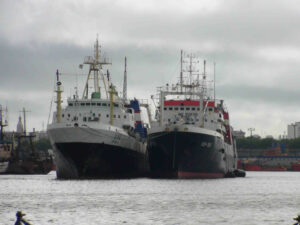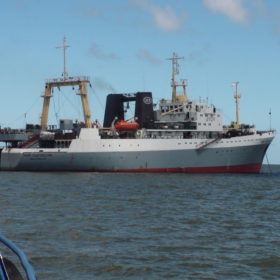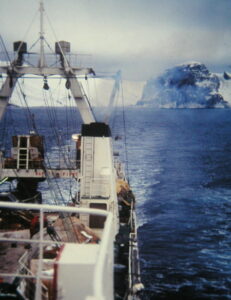 Following Tharos’ April 7 2015 news on Chinese involvement in the krill fishery, SeafoodSource updates on this matter. It addresses Chinese strong drive towards the improvement of processing and quality standards as the only way to compete vis-a vis with current krill operators and suppliers.
Following Tharos’ April 7 2015 news on Chinese involvement in the krill fishery, SeafoodSource updates on this matter. It addresses Chinese strong drive towards the improvement of processing and quality standards as the only way to compete vis-a vis with current krill operators and suppliers.
SeafoodSource April 27th news expands on this aspect.
The growth of the Chinese appetite for seafood has been well-established for several years now, but there is evidence that the Chinese appetite – and its fishing industry – is also expanding to include krill, specifically Antarctic krill.
“The main target is products for human consumption, more specifically krill oil,” said Dimitri Sclabos, whose company, Tharos, a Chilean consultancy, designed the business model and processing concept for the Chinese trawler companies involved. “The Chinese market is eagerly waiting for them, but the goal is to cover the Western market too.”
“Middle-high class Chinese demand is robust and insisting on high quality products”. “They [Chinese trawler companies] will implement new technologies to reach these goals.”
While not that many Chinese companies are involved in fishing and at-sea processing of krill, several have become involved in the market side of the value chain. However, they cannot yet compete with the efficiency and quality of end products of krill processors from other countries.
Tharos, which has been advising on the utilization of krill in the Southern Ocean for more than 25 years, has invented and developed an internationally patented revolutionary process for the at-sea extraction of phospholipids rich krill oil.
Unlike all other extraction methods currently being used, the Tharos principle doesn’t use solvents and therefore leaves no residue in the final product. Sclabos is one of the inventors of the process and claims it to be highly cost efficient. “And our process is chemical free while all current processes used to extract phospholipids rich krill oil are done on land and use solvents.”
‘Several operators are working round the clock to come up with a solution that mimics Tharos’ solvent-free and highly cost efficient process,” he said. “However, being a patent protected method, we bring a safe solution to operators currently discussing ways of collaboration with us.”
According to Sclabos, Chinese onboard krill processing was an area lacking efficient and high-quality driven engineering solutions. “But new Chinese players have brought updated technologies, and most importantly, the drive to achieve efficient operations and the highest possible quality of end products.
“The final objective of those involved in the Chinese krill industry,” he added, “is to fulfill the expected demand of at last 3,000 MT of krill oil from 2015 to 2017. This demand is down to the demands of young middle class consumers who are concerned about their health and see krill oil as a novel alternative to accomplish this target.
“Ten thousand metric tons of dried krill material (feed and food applications) complete the expected Chinese demand.”
It remains to be seen whether China will fulfil its objectives. But the signs are encouraging, or ominous depending on which way the situation is regarded. After all, although krill is the largest fisheries biomass in the world and still relatively unexploited, it is a mistake to think that it will last forever and the market is ready to take whatever is produced.
Full article at – http://www.seafoodsource.com/all-commentary/28057-china-looking-to-become-no-1-in-antarctic-krill







